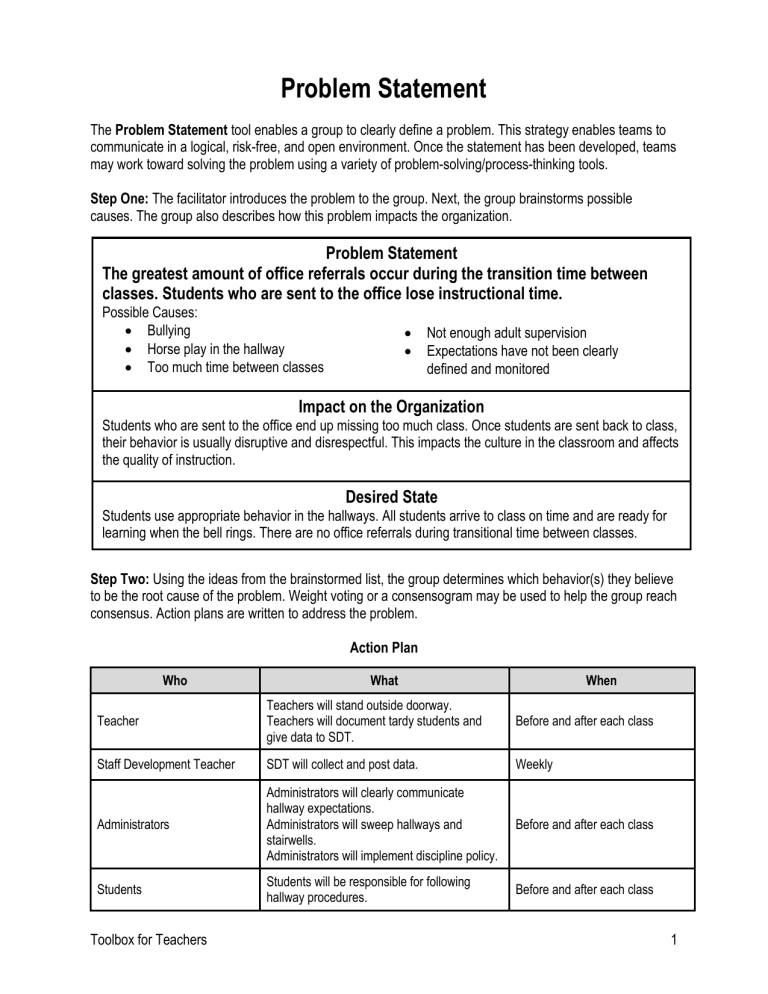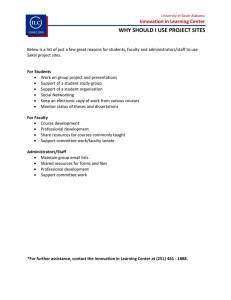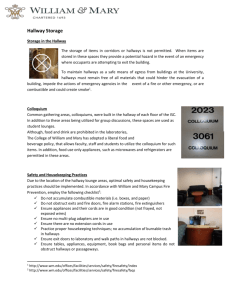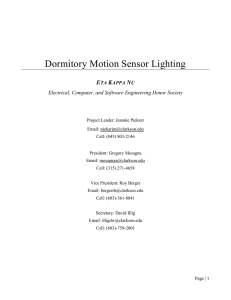Problem Statement

Problem Statement
The Problem Statement tool enables a group to clearly define a problem. This strategy enables teams to communicate in a logical, risk-free, and open environment. Once the statement has been developed, teams may work toward solving the problem using a variety of problem-solving/process-thinking tools.
Step One: The facilitator introduces the problem to the group. Next, the group brainstorms possible causes. The group also describes how this problem impacts the organization.
The greatest amount of office referrals occur during the transition time between classes. Students who are sent to the office lose instructional time.
Possible Causes:
Bullying
Horse play in the hallway
Too much time between classes
Students who are sent to the office end up missing too much class. Once students are sent back to class, their behavior is usually disruptive and disrespectful. This impacts the culture in the classroom and affects the quality of instruction.
Problem Statement
Not enough adult supervision
Expectations have not been clearly defined and monitored
Impact on the Organization
Desired State
Students use appropriate behavior in the hallways. All students arrive to class on time and are ready for learning when the bell rings. There are no office referrals during transitional time between classes.
Step Two: Using the ideas from the brainstormed list, the group determines which behavior(s) they believe to be the root cause of the problem. Weight voting or a consensogram may be used to help the group reach consensus. Action plans are written to address the problem.
Action Plan
Who
Teacher
Staff Development Teacher
Administrators
Students
What
Teachers will stand outside doorway.
Teachers will document tardy students and give data to SDT.
SDT will collect and post data.
Administrators will clearly communicate hallway expectations.
Administrators will sweep hallways and stairwells.
Administrators will implement discipline policy.
Students will be responsible for following hallway procedures.
When
Before and after each class
Weekly
Before and after each class
Before and after each class
Toolbox for Teachers 1
Problem Statement
Problem Statement
Impact on the Organization
Desired State
Who
Toolbox for Teachers
What When
2




